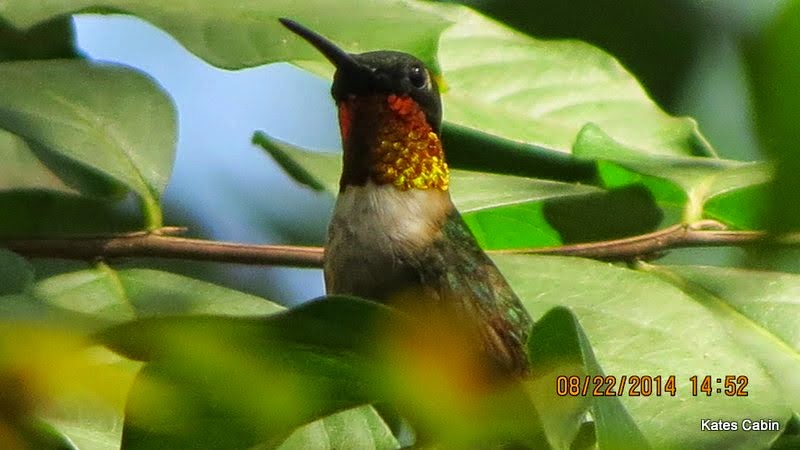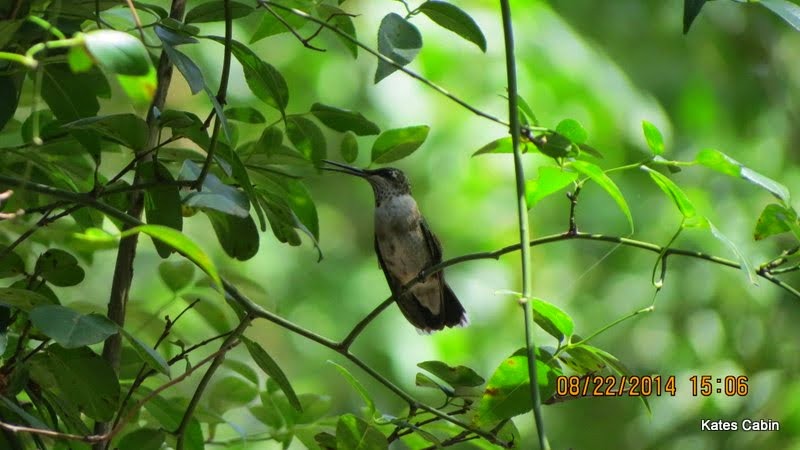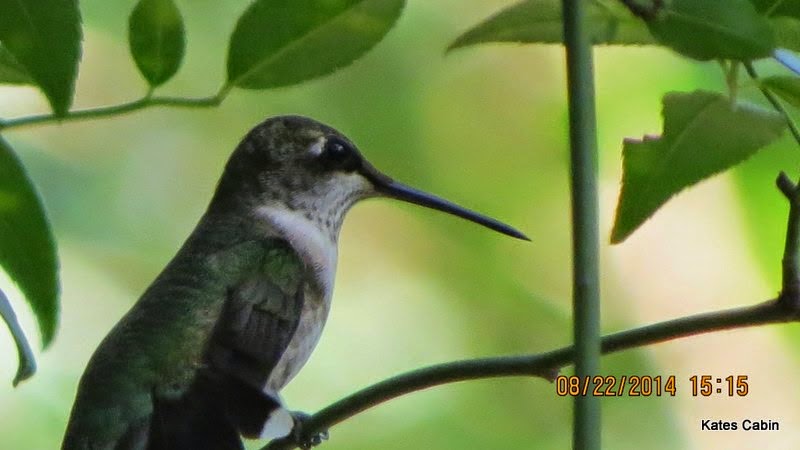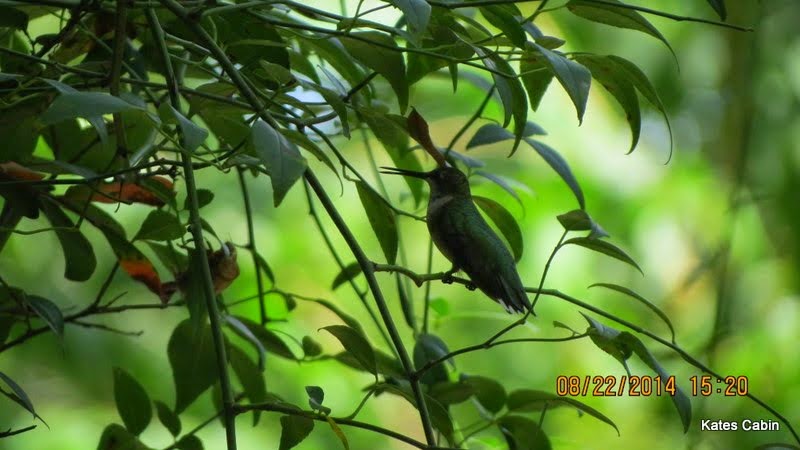
Hi Everybody!!
Welcome to another day of the hummingbird migration. Today I am going to show you a bird on the old fashioned climbing rose. The hummingbirds enjoy the little branches and the camouflage of the leaves as they guard their feeder. You might want to consider a garden climbing rose if you have hummingbird visitors. Shared below is Wikipedia excerpts on roses. Thank you for enjoying the migration with me. The best is yet to come as more and more tiny travelers arrive at my "Hummer Resort". Enjoy!!


On the front porch again to see the bird on the rose bush

Link to complete photostudy in Album Gallery:
https://plus.google.com/u/0/photos/117645114459863049265/albums/6064913187244388945

This hummer is sitting on a branch of the double white climbing rose bush planted at the end of the porch. He is talking and clicking as his tiny feet hold on to the skinny branch.


He is guarding his feeder


This one is a juvenile male (no red throat yet)



I have trees planted in the background that create the shade shadows

https://en.wikipedia.org/wiki/Garden_roses
Garden roses
From Wikipedia, the free encyclopedia
Garden roses are predominantly hybrid roses that are grown as ornamental plants in private or public gardens. They are one of the most popular and widely cultivated groups of flowering plants, especially in temperate climates. Numerous cultivars have been produced, especially over the last two centuries, though roses have been known in the garden for millennia beforehand. While most garden roses are grown for their flowers, some are also valued for other reasons, such as having ornamental fruit, providing ground cover, or for hedging.

History[edit]
It is believed that roses were grown in all the early civilisations of temperate latitudes from at least 5000 years ago. They are known to have been grown in ancient Babylon.[1] Paintings of roses have been discovered in Egyptian pyramid tombs from the 14th century BC.[2] Records exist of them being grown in Chinese gardens and Greek gardens from at least 500 BC.[3][4]
Most of the plants grown in these early gardens are likely to have been species collected from the wild. However there were large numbers of selected varieties being grown from early times; for instance numerous selections or cultivars of the China rose were in cultivation in China in the first millennium AD.[5]
The significant breeding of modern times started slowly in Europe, from about the 17th century. This was encouraged by the introduction of new species, and especially by the introduction of theChina rose into Europe in the 19th century.[4] An enormous range of roses has been bred since then. A major contributor in the early 19th century was Empress Josephine of France who patronized the development of rose breeding at her gardens at Malmaison. As long ago as 1840 a collection numbering over one thousand different cultivars, varieties and species was possible when a rosarium was planted by Loddiges nursery for Abney Park Cemetery, an early Victorian garden cemetery and arboretum in England.[6]
Climbing and rambling[edit]
All aforementioned classes of roses, both Old and Modern, have "climbing" forms, whereby the canes of the shrubs grow much longer and more flexible than the normal ("bush") forms. In the Old Garden Roses, this is often simply the natural growth habit; in many Modern roses, however, climbing roses are the results of spontaneous mutations.[4] For example, 'Climbing Peace' is designated as a "Climbing Hybrid Tea," for it is genetically identical to the normal "shrub" form of the 'Peace' hybrid tea rose, except that its canes are long and flexible, i.e. "climbing." Most Climbing roses grow anywhere from 8'–20' in height and exhibit repeat-bloom. Rambler roses, although technically a separate class, are often lumped together with climbing roses. They also exhibit long, flexible canes, but are usually distinguished from true climbers in two ways: A larger overall size (20'–30' tall is common), so is a once-blooming habit. Climbing and rambling roses are not true vines such as ivy, clematis or wisteria because they lack the ability to cling to supports on their own and must be manually trained and tied over structures such as arbors and pergolas. Examples: 'Blaze' (repeat-blooming climber), 'American Pillar' (once-blooming rambler). One of the most vigorous climbing roses is the Kiftsgate rose, Rosa filipes 'Kiftsgate', named after the house garden where it was noticed by Graham Stuart Thomas in 1951. The original plant is claimed to be the largest rose in the UK, and has climbed 50 feet into a copper beech tree.



...this is brendasue signing off from Rainbow Creek. See you next time!

O+O


No comments:
Post a Comment